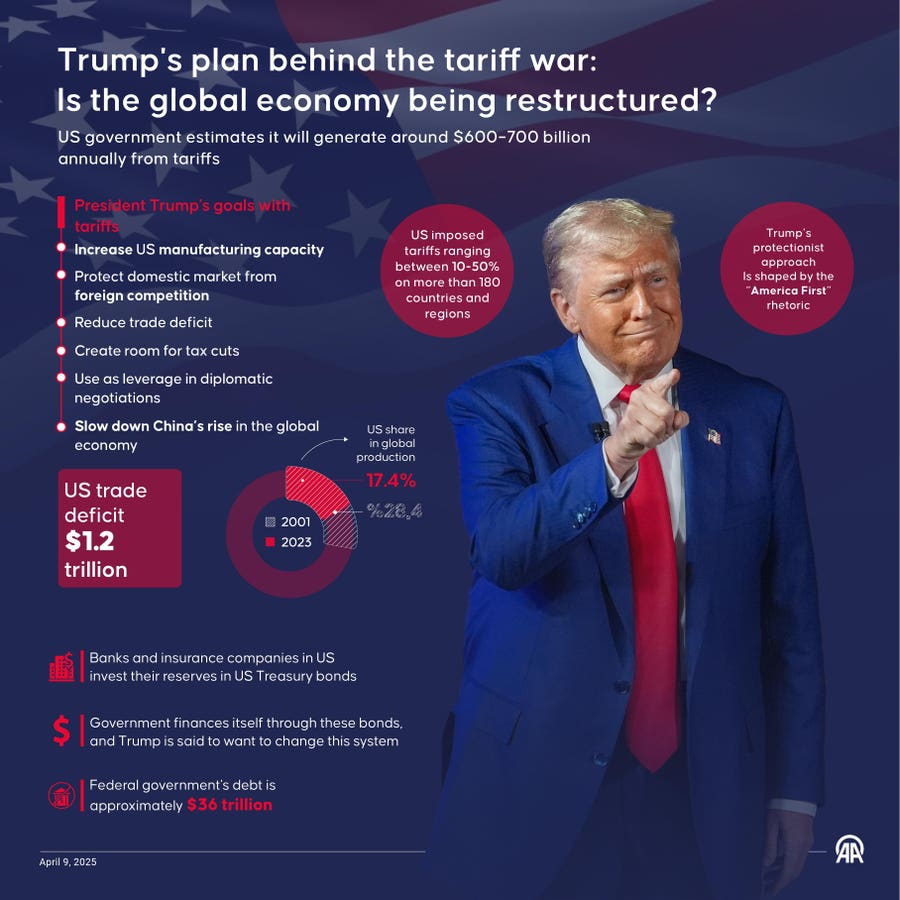The U.S. Trade Deficit – That’s it! Be it S&P crashing >10% this year, tariff standoff with China, or re-negotiation of trade deals globally – the start to Trump’s second term seems to be dead-focused at resolving the deficit problem. But here’s the twist: what if we’re solving the wrong problem? The deficit isn’t the disease, it’s a symptom. The real question is: Is America generating enough demand? Because when domestic demand is strong and fundamentals are solid, the so-called “deficit problem” starts to look secondary. Separately, with its dominance being questioned, Can Tesla Offset BYD’s Surge Or Is Another 50% Stock Drop Inevitable?
The Math: Deficit ≠ Damage
Imagine WidgetCo, a U.S. company that designs high-end gadgets in California, gets them assembled in China for $100, and sells them to American consumers for $1,000 – pocketing $400 in profit.
Here’s what shows up in the trade math:
- $100 import: Adds to the trade deficit. That’s $100 in U.S. dollars leaving the country.
- $400 profit: Gets pocketed by WidgetCo from domestic sales
- But the bigger picture? WidgetCo just created $10,000 in equity value assuming PE multiple of 25 (25 x $400 = $10,000)
- To finance the trade deficit, it sells just 1% of its stock – $100 – to a foreign investor. Boom, dollars are back. Deficit funded.
So what really happened here?
- Most of the value stayed in the U.S. – the IP, the design, the profits.
- The $100 “deficit” came right back as investment because the world wants exposure to the U.S. economy.
- That 25x P/E? It reflects trust in U.S. demand growth and economic institutions.
And here’s the kicker: The stronger the demand, the higher the multiple, the less equity you need to sell to fund the same deficit. Even if the dollars came back as foreign treasury purchases instead of equity, a booming economy means lower yields, manageable debt, and continued dominance. So don’t obsess over the trade deficit. Solve the demand problem – and everything else starts working.
Deficit Is Cost: What Matters More Is Revenue & Value
You don’t invest in a company just because it can control costs – anyone can do that. A fruit vendor can. You invest because you see explosive revenue potential – and you believe that as it scales, it won’t implode under the weight of its own growth. That belief is what justifies a 25x earnings multiple. Take the growth away? You’ll dump the stock without blinking.
Makes sense, right? Now apply that to the U.S. economy.
The trade deficit is a cost. But trying to slash costs while suffocating the top line – the country’s demand engine – is a fast track to economic self-sabotage. Investors notice. Confidence crumbles. They sell. Stocks tank. Yields spike. Debt becomes expensive. Capital dries up. Consumption takes a hit. And just like that, you’re in a downward spiral.
The deficit isn’t as big an enemy as you think. Weak demand is!
The Real Concern: Demand
- Consumer Spending: While personal consumption expenditures (PCE) in the U.S. is growing at about 2.5%, signs of caution are emerging. Many consumers are trading down, opting for value over premium products, and focusing on essentials over discretionary spending.
- Household Debt: In Q4 2024, U.S. household debt reached a record $18.04 trillion, a 3.1% increase from the Q4 2023. This growing debt burden could constrain future spending.
- Consumer Confidence: Economic uncertainties, including trade tensions and inflation fears, have led to a decline in consumer sentiment. You don’t want to beat down the exact thing that keeps the American economy thriving.
Does that mean you should just ignore the deficit? Of course not. In the long-run a persistent deficit can become a concern if interest payments become too high leading to bankruptcy risk or if liabilities to adversarial countries increase too much.
However, any fix needs to take into account not suppressing the engine that powers the U.S. economy – “demand.” We take into account demand risk as we construct the Trefis High Quality (HQ) Portfolio which, with a collection of 30 stocks, has a track record of comfortably outperforming the S&P 500 over the last 4-year period. Why is that? As a group, HQ Portfolio stocks provided better returns with less risk versus the benchmark index; less of a roller-coaster ride as evident in HQ Portfolio performance metrics.
Invest with Trefis
Market Beating Portfolios | Rules-Based Wealth
Read the full article here

